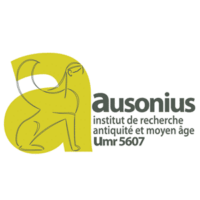Table of contents
1 • Sinclair W. Bell, Anne Berlan-Gallant and Sylvain Forichon,
Introduction. In Search of Roman Spectators
Part I. The Roman publics between words and images: the diversity of vocabulary
for and representations of Roman spectators in ancient sources
2 • Patrizia Arena,
Maximum uero populi Romani iudicium uniuersi consessu gladiatorio declaratum est (Cic., Sest., 124): osservazioni sull’identità del pubblico degli spettacoli tra tarda Repubblica e inizio del Principato
3 • Marion Bellissime,
Des spectateurs sous tous les regards : étude lexicale des livres 36 à 62 de l’Histoire romaine de Cassius Dion
4 • Frederik Grosser,
Auf der Suche nach dem Publikum: Darstellungen von Zuschauern bei Circusrennen
Part II. The hierarchy of audiences and its consequences for their access to performances
5 • Anne Berlan-Gallant,
Les femmes spectatrices au théâtre et à l’amphithéâtre dans l’Occident romain
6 • Marie-Hélène Garelli,
Caligula et les discrimina ordinum au théâtre. La lecture politique et morale de Flavius Josèphe (AJ, 19.1-273)
7 • Barbara Dimde,
Milites in caueā: On the Audiences of Military Amphitheaters
8 • Matthew Schueller,
Audience Dynamics in Philippopolis’ Theater and their Shaping of Roman Thrace’s Metropolis
Part III. The impact of audience hierarchy on the comfort level
and sensory experience of different viewers
9 • Marialetizia Buonfiglio,
Davanti agli occhi: alcune considerazioni sulla percezione visiva e l’accessibilità al Circo Massimo
10 • Sophie Madeleine,
Les uela : un spectacle dans le spectacle. Étude des différentes typologies de couvertures temporaires
Part IV. The tastes, reactions, and emotions of the public:
between unity and diversity
11 • Sylvain Forichon and Marco Vespa,
“Sed quae potest homini esse polito delectatio, cum […] praeclara bestia uenabulo transuerberatur ?” (Cic., Fam., 7.1.3) : La diversité des réactions du public romain face aux animaux lors des spectacles
12 • Gian Luca Gregorio and Fabio Mancuso,
La percezione degli spettacoli gladiatori nei graffiti di Pompei ed Efeso: uno studio comparativo
13 • Joe Sheppard,
Epigraphic Evidence for the Acclamationes of Pompeian Spectators
14 • Éloïse Letellier-Taillefer,
Sur les traces du public des théâtres de Pompéi : des spectateurs aux usagers
15 • Sinclair W. Bell, Anne Berlan-Gallant and Sylvain Forichon,
Conclusion. An audience or audiences?

Abstract •••
Spectacles in the Roman Empire (athletic competitions, scenic games, gladiatorial fights, and circus races) brought together generally heterogeneous crowds including, among others, magistrates, senators, knights, plebeians, slaves, women, and children. But did all layers of Roman society have easy access to the spectator stands? Did they experience these entertainments under the same conditions? Did they respond to them with the same emotions and sensations? To what extent did the composition of the provincial public differ from those of Rome? These are the central questions raised by the authors of this book who answer them by drawing upon all the available sources of evidence: graffiti, inscriptions, literature, iconography, and archaeological finds. Each contribution investigates different categories of the public and produces a finer and more nuanced understanding of Roman spectators and their diverse reception of the performances in Antiquity.
Résumé •••
Les spectacles de l’Empire romain (compétitions athlétiques, jeux scéniques, combats de gladiateurs et jeux du cirque) rassemblaient généralement des foules hétéroclites comprenant entre autres des magistrats, sénateurs, chevaliers, plébéiens, esclaves, femmes, enfants… Toutes ces couches de la société romaine avaient-elles pour autant facilement accès aux gradins ? Vivaient-elles ces divertissements dans les mêmes conditions ? Éprouvaient-elles les mêmes émotions et sensations ? Dans quelle mesure la composition des publics provinciaux différait-elle de ceux de Rome ? Telles sont les principales questions soulevées par les auteurs de ce livre qui s’appuient pour y répondre sur tous les types de sources à leur disposition : graffitis, inscriptions, littérature, iconographie, données archéologiques… Chaque contribution examine différentes catégories du public et offre une compréhension plus fine et nuancée des spectateurs romains et de leurs diverses réceptions des spectacles dans l’Antiquité.
Published with the assistance of the Université Bordeaux Montaigne, the Institut Ausonius and Northern Illinois University.







